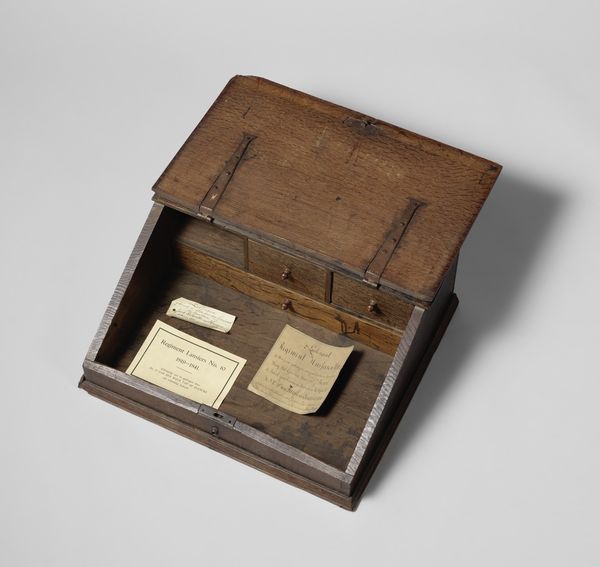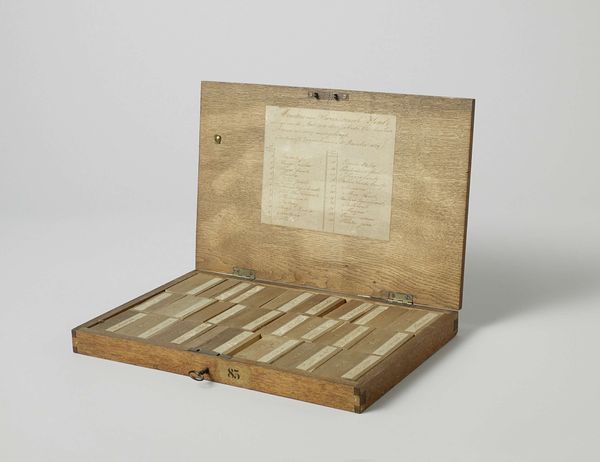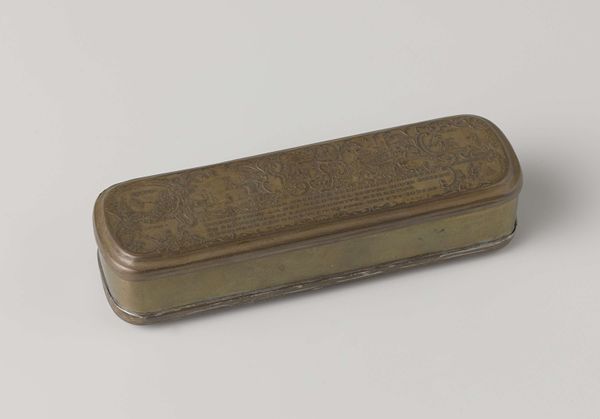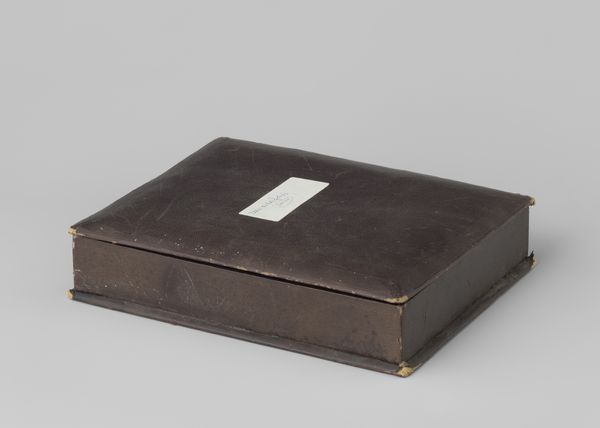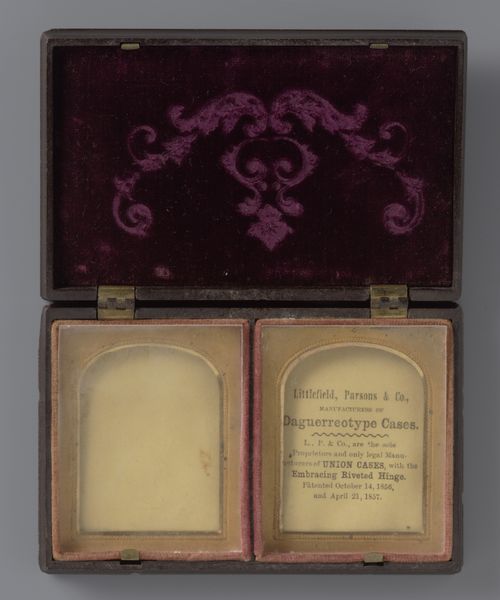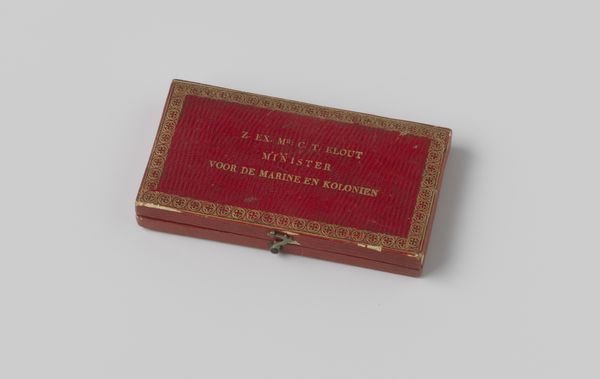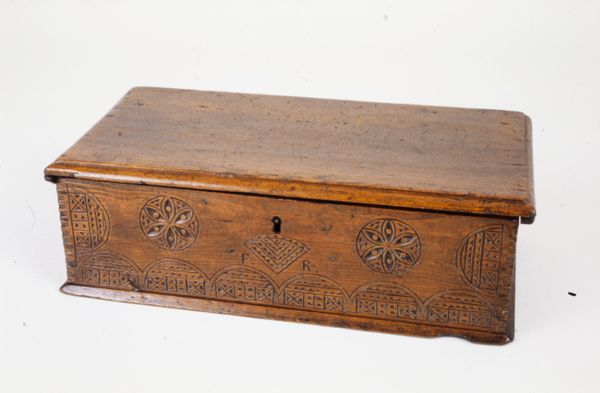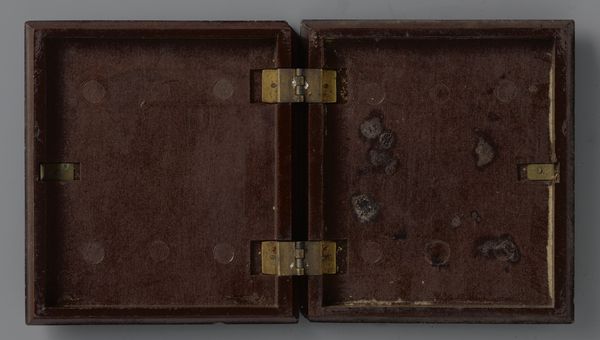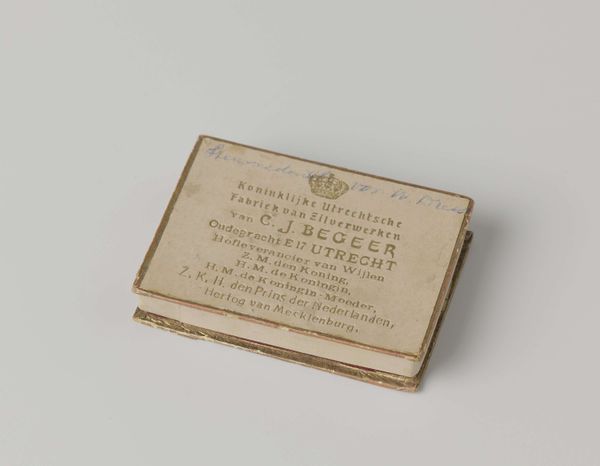
wood
#
wood
Dimensions: height 3.9 cm, width 44.5 cm, depth 25.1 cm
Copyright: Rijks Museum: Open Domain
Editor: Here we have "Box Containing Twelve Samples of Wood from North America," created around 1825 by August Elize Tromp. It’s a wooden box filled with, well, samples of wood! It's surprisingly compelling. I'm curious, what aspects of this piece strike you? Curator: Immediately, I'm drawn to the labor embedded within this object. Think about the felling of the trees, the milling of the wood, the crafting of the box and the careful selection and arrangement of the samples. This isn't just about aesthetics; it's about the means of production and consumption in 19th-century North America. What can twelve small pieces of wood tell us about the vast networks of trade and resource extraction? Editor: So, you're saying the value is not necessarily in the individual beauty of each piece, but more about what they represent as a collection? Curator: Precisely. Consider the purpose of this box. It's likely a sales tool or a demonstration piece intended to showcase the resources available for shipbuilding. This links the object directly to maritime commerce and the exploitation of natural resources. Think about the hands that touched these materials, the economic systems they represent. Are we admiring craftsmanship or complicity in resource exploitation? Editor: That's a completely different way to view what initially appeared as just a collection of pretty wooden squares! It does make you think about the bigger picture. Curator: Indeed. By examining the materials and their context, we begin to understand the complex relationships between labor, industry, and environment that shaped the world around this box. A seemingly simple object can reveal a great deal. Editor: I’ll certainly look at "craft" and "beauty" differently from now on. Thanks! Curator: My pleasure! Examining art from this perspective reveals previously hidden complexities and prompts us to consider its deeper connections to society and economics.
Comments
No comments
Be the first to comment and join the conversation on the ultimate creative platform.
